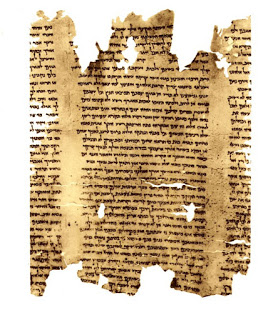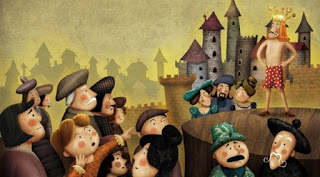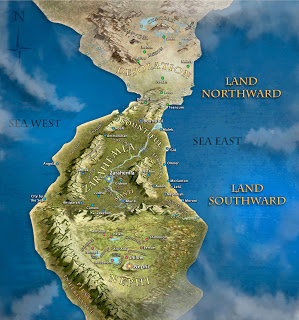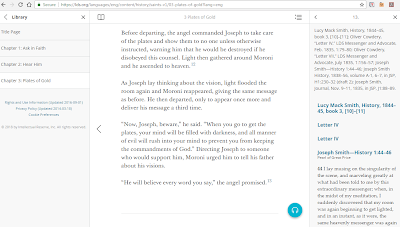http://www.bmaf.org/articles/origin_mesoamerican_model__woolley
This article provides a useful service. It exposes the Mesoamerican model for what it is; i.e., an effort to vindicate what some people think Joseph Smith wrote in the Times and Seasons. Take away those articles and the Mesoamerican model collapses.
Now that we know who wrote the Times and Seasons articles, and why, there’s no basis for continuing to speculate that the Book of Mormon took place in Mesoamerica.
Here are the main points, along with my comments.
1. Joseph Shares Information Concerning the Nephites with His Family
Woolley quotes from Lucy Mack Smith’s History of Joseph Smith, emphasizing that Joseph was well acquainted with the Book of Mormon peoples. This is a little ironic since the President of the BOMAF thinks Joseph didn’t know much about the Book of Mormon, but presumably most believing LDS agree that Joseph did know quite a bit about the civilization described in the book.
2. Joseph Writes Four Articles Identifying Central America as the Book of Mormon Lands
This point attributes the Times and Seasons articles directly to Joseph Smith, even calling one of them a “revelatory statement.” Since we now know that Joseph didn’t write those articles (see The Lost City of Zarahemla for the details), Woolley’s argument here is an admirable effort, but outdated. Hopefully he will revise this in light of new evidence.
3. A Historical Vignette
This point discusses Joseph’s whereabouts and activities in Nauvoo during the summer of 1842. Despite purportedly detailed research, Woolley can’t find a single reference to Joseph Smith editing, publishing, or even writing for the Times and Seasons during this period, apart from the letters he sent to the actual editor (D&C 127 and 128). Worse, Woolley understandably misses the point that Joseph didn’t write the articles and that William Smith published them in the Times and Seasons. Hopefully he will revise this.
4. A Strange Book Supports Claims in the Book of Mormon
Here, Woolley mentions that Dr. Bernhisel sent the Stephens book to Joseph but doesn’t know, or fails to mention, that Benjamin Winchester prompted Bernhisel to do it. Then Woolley cites the History of the Church for the proposition that “Joseph was so impressed with this book that a special notation of it was included in his diary.” He doesn’t tell his readers that this “diary” was compiled between 24 February and 3 May 1845, nearly 3 years after the purported events and eight to eleven months after Joseph died. The grammar of the excerpt reflects uncertainty. There is zero evidence that this is a direct quotation from Joseph Smith, or even a paraphrase of what he may have said. In fact, this “diary” is actually the Manuscript History. The portion of this “diary” referring to Stephens and the Nephites was not included in the actual Journal, as shown in the Joseph Smith papers, suggesting it was a later addition by someone else.
http://josephsmithpapers.org/paperSummary/journal-december-1841-december-1842#!/paperSummary/journal-december-1841-december-1842&p=30
Here is the Manuscript History:
http://josephsmithpapers.org/paperSummary/history-1838-1856-volume-c-1-2-november-1838-31-july-1842?p=522&highlight=Catherwood%20have%20succeeded%20in%20collecting%20in%20the%20interior%20of%20America
5. Stephens’s Book Is Evidence Supporting the Authenticity of the Book of Mormon
In this paragraph, Woolley again projects all kinds of thoughts onto Joseph–based on the writings of Benjamin Winchester. One should be reluctant to attribute to Joseph’s own mind the words of a man Joseph himself described as being “rotten at heart” and a man “who would injure the Church as much as he could.” This is true of all four of the Times and Seasons articles Woolley attributes to Joseph.
6. Joseph Becomes Editor of the Times and Seasons, March 15, 1842
This is the old argument that a boilerplate notice included in every issue of the Times and Seasons from March through November 1842 somehow converted everything within its pages into the product of Joseph’s divine inspiration. In reality, there were articles written under pseudonyms, reprints from other newspapers (including the Wasp), unsigned articles, and articles signed by “Ed.” that were not signed by Joseph. In what sense did he take responsibility for all of this? It was his recognition that he couldn’t actually be fully responsible, especially after the “Zarahemla” article appeared without his prior knowledge or approval, that led him to finally resign as editor.
7. Joseph’s Second Article That Recognizes Central America as the Book of Mormon Lands
Another article written by Winchester, falsely attributed to Joseph Smith, actually provides no support for the Mesoamerican theory.
8. Facts Are Stubborn Things
This is the article that Winchester “signed” with the masthead from his own newspaper, the Gospel Reflector.
9. Joseph Writes Yet Another Article on the Subject
Woolley writes that “Apparently, the third article made enough of a stir to warrant a follow-up article only fifteen days later.” There is zero evidence of such a stir. The only “stir” the previous articles created was in the minds of Winchester and William Smith, to encourage them to come out with the “Zarahemla” article.
10. Joseph’s Editorial Responsibility for the Times and Seasons Is Concluded
Woolley doesn’t realize that it was the unauthorized publication of the Mesoamerican articles that led Joseph Smith to resign!
11. The Conclusions
The conclusion to this article is a compound error. First, Woolley incorrectly assumes Joseph wrote these Times and Seasons articles, when he definitely did not. Second, he claims “no doubt his excitement must have been extremely high as he read Stephens’s [sic] book [sic],” yet Joseph waited nearly a year after receiving the books from Bernhisel before getting around to telling people about that excitement. And when he finally got around to it, he had Benjamin Winchester write the articles! And that’s assuming Joseph had anything to do with these articles. The historical evidence shows he did not.
Addendum
To support his argument, Woolley cites John Taylor’s speculation that Quetzalcoatl and Christ are the same being. Of course, no one can say where Quetzalcoatl visited the people. This is a mythical figure who could have been from anywhere, from any culture. Quetzalcoatl could have been based on the actual visit of Christ, handed down through generations from North America. Or it could be based on other visits of Christ to his lost sheep that we don’t know about. But it is not evidence that Book of Mormon events took place in Central America. The Moses Thatcher quotation merely reflects the legacy of Benjamin Winchester.











